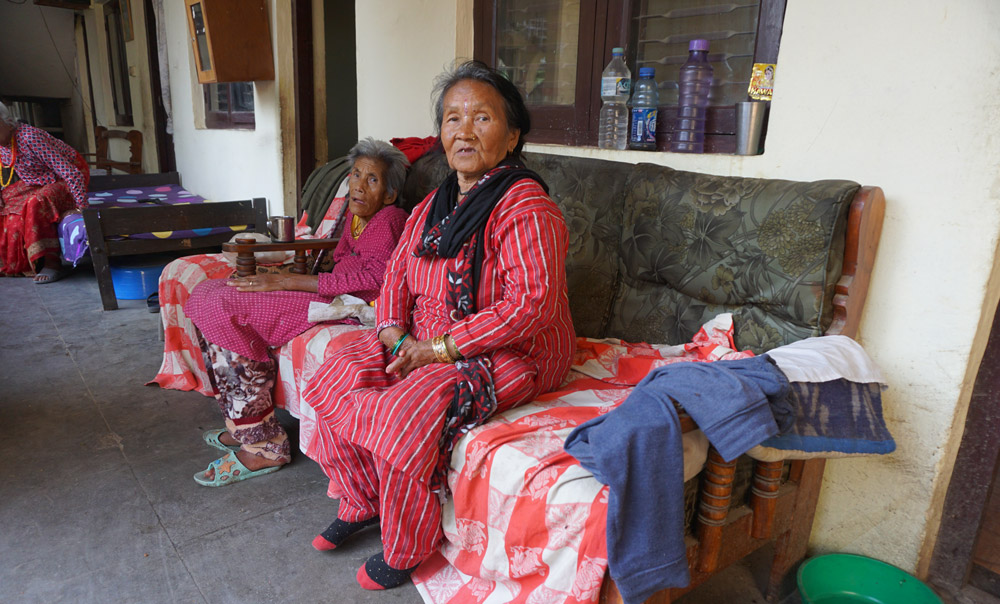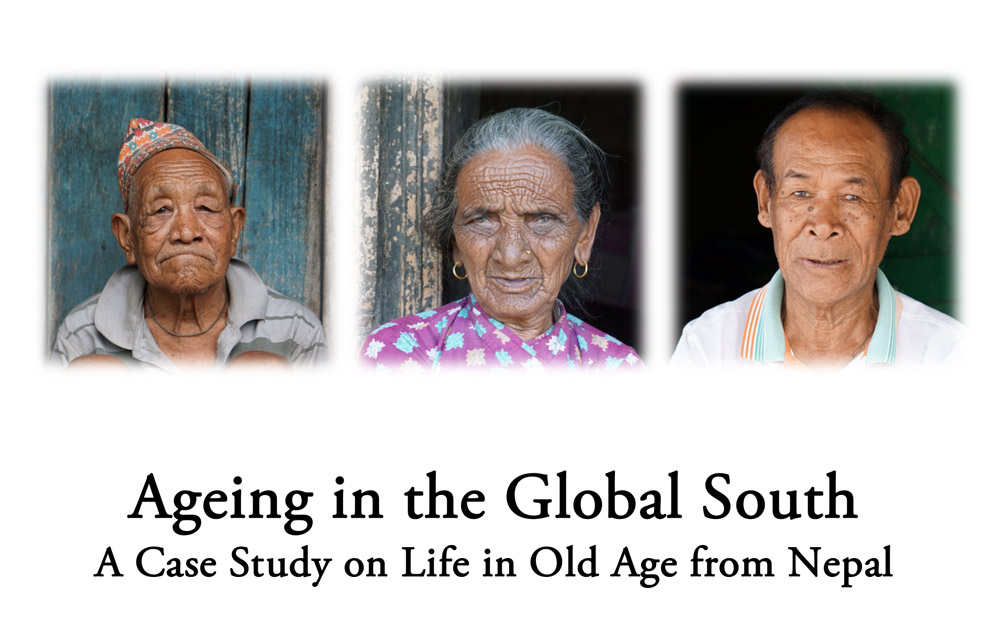#104: Nepal - Kein Land für alte Leute?
In Nepal stellte die Grossfamilie lange Zeit ein sicheres Auffangnetz für ältere Familienmitglieder dar. Doch mit fortschreitendem sozio-ökonomischem und demographischem Wandel hat sich diese soziale Institution signifikant verändert.

Gegenwärtig kursieren in den nepalesischen Medien Schlagzeilen wie «Älteres Ehepaar durch eigene Kinder aus dem Haus vertrieben», «Ältere Personen, die von ihren eigenen Kindern verlassen wurden, suchen Zuflucht in Devghāṭ». Oder auch Geschichten von misshandelten und vernachlässigten Eltern, die nach einem «Picknick im Grünen» im Nirgendwo zurückgelassen werden.
Die Jungen ziehen moderne «westliche» Lebensstile, sowie auch kleinere, sogenannte Kern-Familien (Eltern-Kind) den traditionellen Gepflogenheiten wie beispielsweise einer Grossfamilie vor; auf der Strecke bleiben die alternden Eltern. Die familiäre Altenfürsorge funktioniert vielerorts nicht mehr wie früher, vor allem in ländlichen Dörfern macht sich dies sichtlich bemerkbar: Grosseltern-Enkel-Haushalte dominieren. In städtischen Gebieten sind diese Familienkonstellationen aufgrund einer guten Durchmischung von verschiedenen Altersgruppen eher noch versteckt.
Rapider demographischer Wandel als grosse gesellschaftliche Herausforderung
Die in Nepal spezielle Konstellation von Emigration der jüngeren Generationen und rapidem demographischem Wandel treibt die Überalterung der Bevölkerung massiv voran. Die jährliche Wachstumsrate der über Sechzigjährigen beträgt mehr als das Doppelte als diejenige der Gesamtbevölkerung.
Organisierte Betreuung und Pflege von alten Menschen in Institutionen und Organisationsformen, oder gar von der öffentlichen Hand kennt man in Nepal kaum. Dennoch entstehen neuerdings nach und nach Angebote für Wohn- und Betreuungsalternativen. In städtischen Gebieten wie Pokhara oder im Kathmandu-Tal sind einige Altersheime und Tagesbetreuungszentren für alte Menschen zu finden - wenn man weiss wo. Meist sind es Nichtregierungsorganisationen oder vereinzelte private Initiativen aus städtisch-lokalen Gemeinschaften, die sich dieser relativ neuen Herausforderung der Gesellschaft annehmen.
In einem meiner letzten Feldaufenthalte habe ich zusammen mit meiner Dissertationsbetreuerin Ulrike Müller-Böker solche neu aufkommenden Altersheime oder Tagesbetreuungszentren in Pokhara und im Kathmandu-Tal besucht. Mehr dazu berichte ich im Beitrag Nepal - Kein Land für alte Leute? Einblicke in neu entstehende soziale Einrichtungen (PDF, 210 KB) in einer Spezialausgabe zum Thema «Altern in Südasien» in der Zeitschrift SÜDASIEN.
1 Gurung, Aash. 2015. Elderly Couple "expelled" from House by Children. The Kathmandu Post, 2015.
2 Khatiwada, Bimal. 2015. Elderly Abandoned by Their Own Children Seek Refuge in Devghat. The Kathmandu Post, 2015.
Sarah Speck
